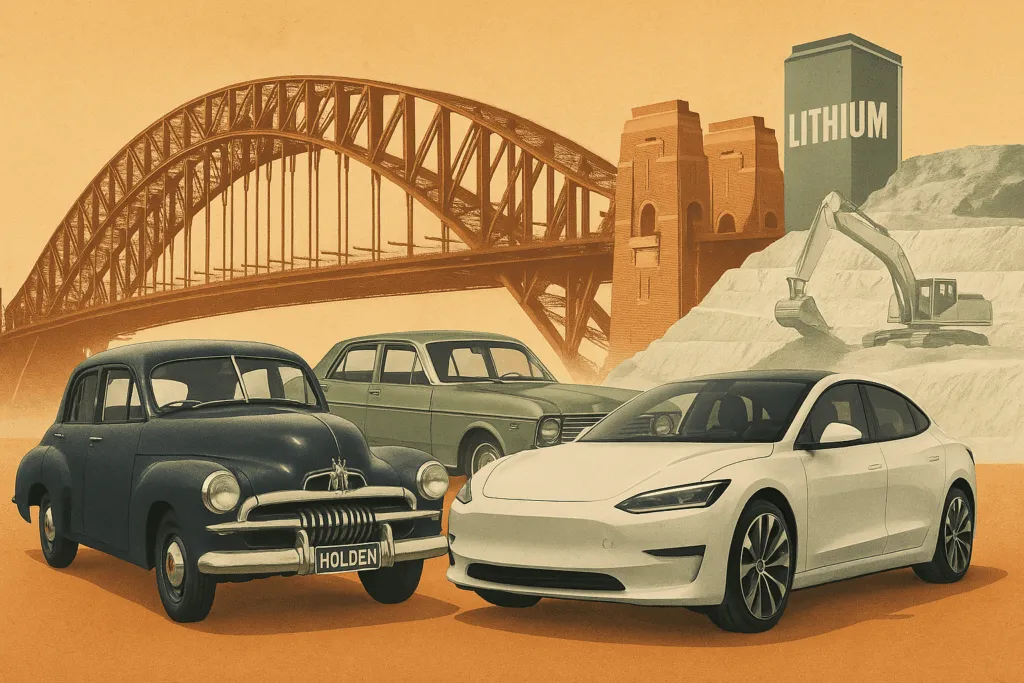Австралийская автомобильная промышленность – это история взлётов, падений и преобразований, отражающая экономические и технологические изменения в стране. От первых паровых экипажей до современных электромобилей Австралия прошла путь от амбициозного производителя до рынка, зависящего от импорта, с уникальными инженерными компетенциями.
Всё началось в конце XIX века, когда Герберт Томсон и Эдвард Холмс создали первый австралийский паровой автомобиль. В 1901 году Харли Таррант построил первый автомобиль с двигателем внутреннего сгорания, полностью произведенный в Австралии. Эти ранние разработки заложили основу будущей отрасли, которая начала стремительно развиваться в XX веке.
Ключевыми игроками были Ford Australia (основана в 1925 году), Holden (выпустила первый серийный австралийский автомобиль в 1948 году), а позднее Toyota, Mitsubishi, Nissan и другие. В 1970-х годах Австралия входила в десятку крупнейших автопроизводителей мира, производя до полумиллиона автомобилей в год. Местная автомобильная промышленность была ориентирована на производство полноразмерных седанов и утилитарных моделей, адаптированных к суровым условиям континента. Однако с начала 2000-х годов отрасль столкнулась с рядом проблем: ростом издержек, ограниченным внутренним рынком, усилением конкуренции со стороны азиатских производителей и сокращением государственной поддержки. В 2017 году производство легковых автомобилей в Австралии было окончательно свёрнуто — последними закрылись заводы Holden и Toyota. Ford ушёл годом ранее, в 2016 году.
Несмотря на это, Австралия сохранила инженерные и дизайнерские центры, прежде всего Ford и GM Holden, которые продолжают разрабатывать модели для мирового рынка. Кроме того, страна активно развивает производство грузовиков (Kenworth, Iveco), а также компонентов и технологий для автопрома — например, карбоновых панелей, систем автономного вождения и аккумуляторов.
С переходом на электромобили Австралия получила шанс на новое промышленное возрождение. Богатые запасы лития, никеля и кобальта делают её потенциальным лидером в производстве аккумуляторов. Центр Кармайкла при Австралийском институте уже предложил стратегию создания новой автомобильной промышленности, ориентированной на электромобили и устойчивые технологии. По оценкам, переработка лития может приносить стране более 22 миллиардов австралийских долларов в год. Сегодня Австралия — не столько производитель автомобилей, сколько поставщик идей, технологий и ресурсов. Её будущее в автомобильной промышленности — за высокотехнологичными решениями, устойчивыми цепочками поставок и глобальной интеграцией. И хотя эпоха Holden и Falcon осталась в прошлом, инженерный дух страны продолжает жить — в лабораториях, стартапах и новых проектах, которые могут вернуть Австралию на мировую автомобильную карту.
Австралийская автомобильная промышленность – это история взлётов, падений и преобразований, отражающая экономические и технологические изменения в стране. От первых паровых экипажей до современных электромобилей Австралия прошла путь от амбициозного производителя до рынка, зависящего от импорта, с уникальными инженерными компетенциями.
Всё началось в конце XIX века, когда Герберт Томсон и Эдвард Холмс создали первый австралийский паровой автомобиль. В 1901 году Харли Таррант построил первый автомобиль с двигателем внутреннего сгорания, полностью произведенный в Австралии. Эти ранние разработки заложили основу будущей отрасли, которая начала стремительно развиваться в XX веке.
Ключевыми игроками были Ford Australia (основана в 1925 году), Holden (выпустила первый серийный австралийский автомобиль в 1948 году), а позднее Toyota, Mitsubishi, Nissan и другие. В 1970-х годах Австралия входила в десятку крупнейших автопроизводителей мира, производя до полумиллиона автомобилей в год. Местная автомобильная промышленность была ориентирована на производство полноразмерных седанов и утилитарных моделей, адаптированных к суровым условиям континента. Однако с начала 2000-х годов отрасль столкнулась с рядом проблем: ростом издержек, ограниченным внутренним рынком, усилением конкуренции со стороны азиатских производителей и сокращением государственной поддержки. В 2017 году производство легковых автомобилей в Австралии было окончательно свёрнуто — последними закрылись заводы Holden и Toyota. Ford ушёл годом ранее, в 2016 году.
Несмотря на это, Австралия сохранила инженерные и дизайнерские центры, прежде всего Ford и GM Holden, которые продолжают разрабатывать модели для мирового рынка. Кроме того, страна активно развивает производство грузовиков (Kenworth, Iveco), а также компонентов и технологий для автопрома — например, карбоновых панелей, систем автономного вождения и аккумуляторов.
С переходом на электромобили Австралия получила шанс на новое промышленное возрождение. Богатые запасы лития, никеля и кобальта делают её потенциальным лидером в производстве аккумуляторов. Центр Кармайкла при Австралийском институте уже предложил стратегию создания новой автомобильной промышленности, ориентированной на электромобили и устойчивые технологии. По оценкам, переработка лития может приносить стране более 22 миллиардов австралийских долларов в год. Сегодня Австралия — не столько производитель автомобилей, сколько поставщик идей, технологий и ресурсов. Её будущее в автомобильной промышленности — за высокотехнологичными решениями, устойчивыми цепочками поставок и глобальной интеграцией. И хотя эпоха Holden и Falcon осталась в прошлом, инженерный дух страны продолжает жить — в лабораториях, стартапах и новых проектах, которые могут вернуть Австралию на мировую автомобильную карту.











